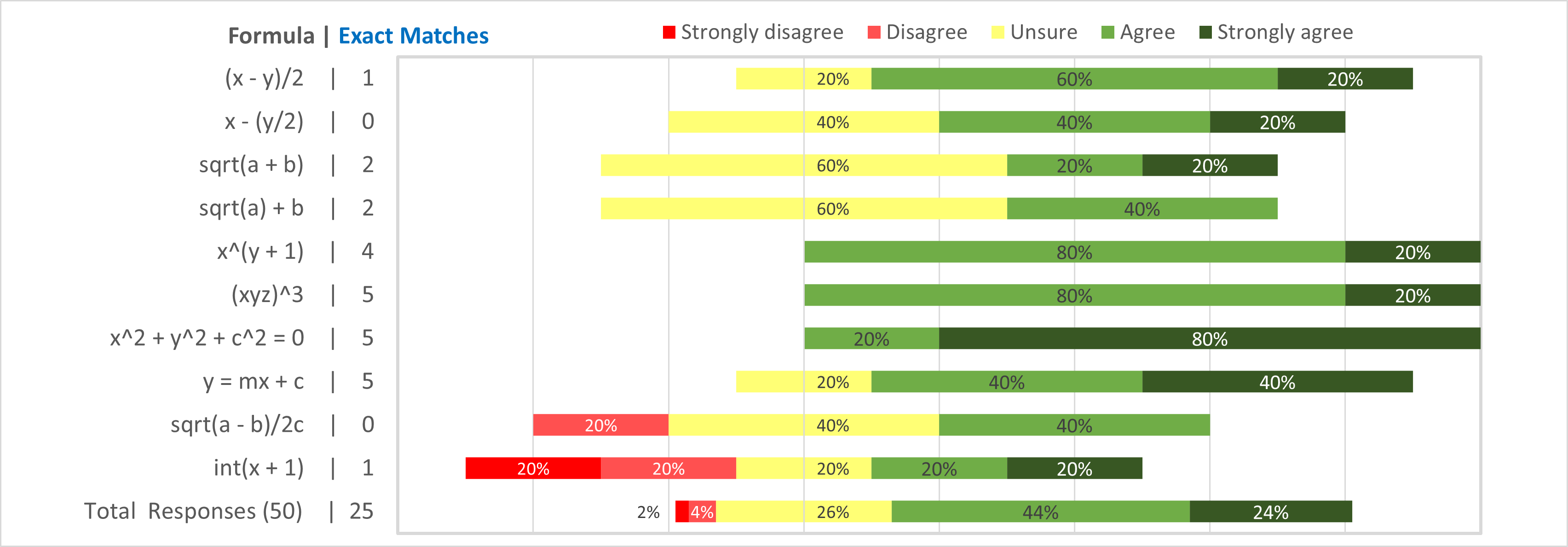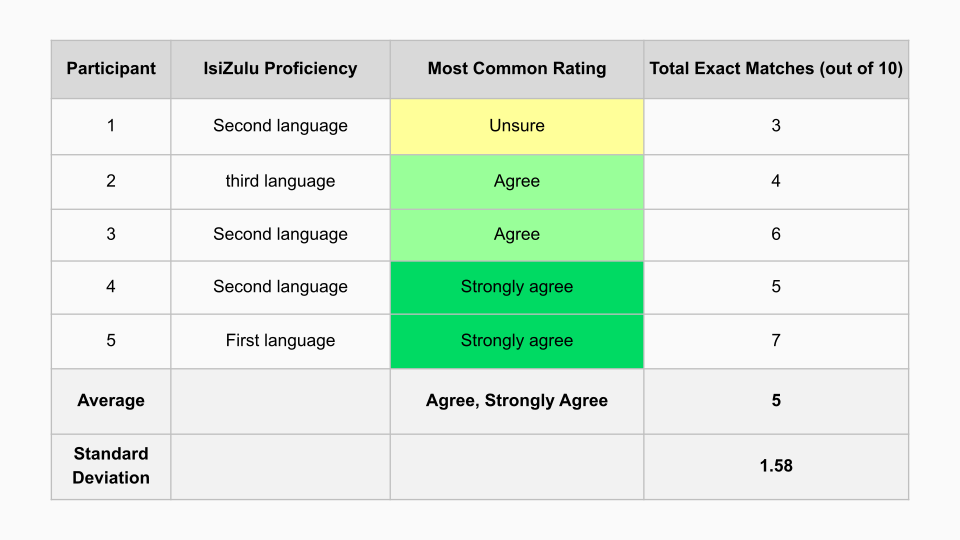Individual Description's Performance

A Stacked Chart Comparing the
Proportion of Ratings and the Total Exact Matches (out of 5) of Each Formula; and Displays the Total Percentage of Each Rating and the Total Exact
Matches for the 50 Responses.
The expressions that performed the best included those with power, equals, multiplication, plus and divide operators.
The descriptions for the complex expressions y=mx+c and (xyz)^3 were rated as understandable by 100% of the responses, which coincides with all five participants typing out the formulae correctly.
The descriptions that did not perform as well, were those that contained square root, integral and minus operators. The description for the expression (x-y)/2 was interpreted as (y-x)/2 (reversed order of operands for the minus sign) by 3 of the 5 participants. The same issue with the minus operator occurred with the expression x-(y/2), it was understood as (y/2)-x by 4 out of 5 participants and received zero exact matches.
Descriptions containing a square root received mixed ratings and few exact matches. The expression sqrt(a-b)/2c could not be answered correctly by any of the participants. The L1 speaker was the only participant able to distinguish between sqrt(a)+b and sqrt(a+b). One participant, an L2 speaker, commented that they were confused by the wording ‘Umaziphinde’, in the square root description.
There was a single description containing an integral, int(x+1), which was answered correctly only by the L1 speaker. This description received the most mixed ratings, with a different rating from each of the five participants.

